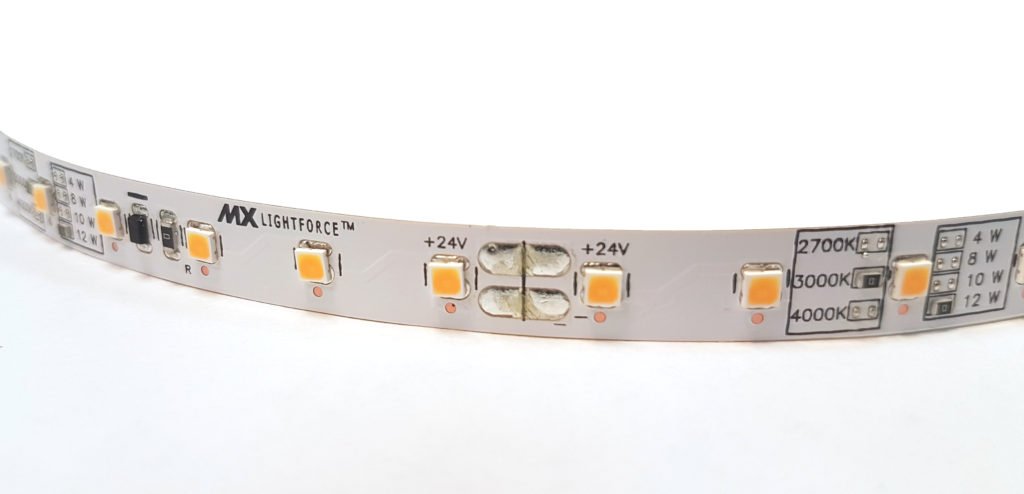Various industrial, commercial, and residential projects across the globe employ flexible LED strip lights. Architects and lighting designers embrace LED strip lights for improved efficiency, color possibilities and brightness. The ease of setting them up is a significant selling point. LED strips are the most popular choice for at-home DIYers because of their versatility, low profile, and practical accessories. With the correct tools and a few hours, even a do-it-yourselfer can create like an expert with these LED strips.
You can find everything you need to know about 12V light-emitting diodes here. Take a look at this list before making a purchase and make sure you understand all you need to know about LED strips before buying and installing them. Likewise, look for a reputable heavy duty light manufacture company to avoid regrets later.
The density of LED Strips = Intensity of Light
The number of LEDs in a given area is the LED light strip’s density. ‘LEDs per Meter’ is the unit of density for LED flex strips. The High-Density strip has 60 LEDs/M, whereas the Standard Density strip has 30. The denser the strip, the brighter and better the light!
A Lumen is a unit of brightness based on how the human eye perceives light. Because of the widespread usage of incandescent lighting, the most common unit of measurement for determining light intensity is wattage. Lumens have replaced candelabras as the official unit of measure for LED light output. Choosing LED strip lights based on their lumen output is critical since it determines the color and intensity of the light they emit. When comparing the brightness of LED strips, notice how Lumens are measured.
Color
The hue of an LED strip is entirely up to the user. For people who like a wide range of colors and effects, RGB LED strips are an excellent choice. It is easy to use RGB strip lights in any house room as accent lighting. Because they employ red, green, and blue diodes, you can blend the colors to generate a wide range of hues and shades. Make sure you utilize a dimming controller from the dimming portion of this article if you are utilizing RGB strips.
Red, green, blue, yellow, and white are all single-color options for the strips (3000-6500K CCT).
Color temperature in degrees Kelvin (K) is known as CCT, which stands for Correlated Color Temperature. The color and brightness of an LED strip are closely related to its temperature rating. Take a look at the images below for some pointers. 3000K, or “warm white,” is a color temperature that produces an orange or yellow hue. When the Kelvin temperature increases, the hue shifts from yellowish yellow to off-white to natural white, and finally cool white.
Installation
Many people are concerned about the procedure of installing the software. The LEDs’ reputation as “the lights of the future” has led to misconceptions that installing them would be challenging.
The good thing is that putting them in your house doesn’t need much effort on your part. Adhesive tape is usually included with most models, and you can use it in a wide variety of ways. Once the installation is complete, ensure the area is clean and dry at all times.
Wattage consumption per strip of LEDs
One of the reasons we have started using LEDs is because they use less power than incandescent bulbs. These lights’ wattage shows us how much electricity they use, and how much we will have to pay at the end of the month. Make careful to check the watts per foot, meter, or reel before purchasing.
Also Read About: Bidet Converter Kit
Some reels say “24 watts” on the label, but when the buyer reaches home, they find that this is per meter or per foot, which means that the whole reel consumes a lot more energy. Even worse, they purchased a power supply with a power rating of just 30 watts, naively believing it would be sufficient. There is a good chance this will happen if the vendor fails to provide the necessary details in an understandable style.
In the end, it’s essential to know how much voltage your flexible LED strip lights are running at. Using a 12-volt power source for an LED strip light that requires 24 volts will danger fire.
Options for personalization
Strip lighting has numerous advantages, but its adaptability is one of the most intriguing. There are several ways to customize the brightness and color of light generated by a single strip of LEDs. Each LED has its own set of color sensors, with red, green, and blue being the most common hues. A rainbow of shades may be created by mixing and matching these primary colors and varying the brightness of each one.
Also Read: Sip of Ravage Stamina
The bulb has all of the receptors, and all you have to do is use a remote to modify things. So it’s a breeze to change things around. Strip lights come in a variety of shapes and sizes and you will want to do some research before purchasing one. You can consider looking for ideas on using LED strip lights in your room.Don’t forget to measure the area where these diodes will be installed and locate the best location for them. In the long run, they will save you money on your energy costs, and you will never go back to regular bulbs. It is time to lighten up your world with LED strips!

